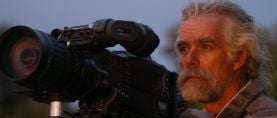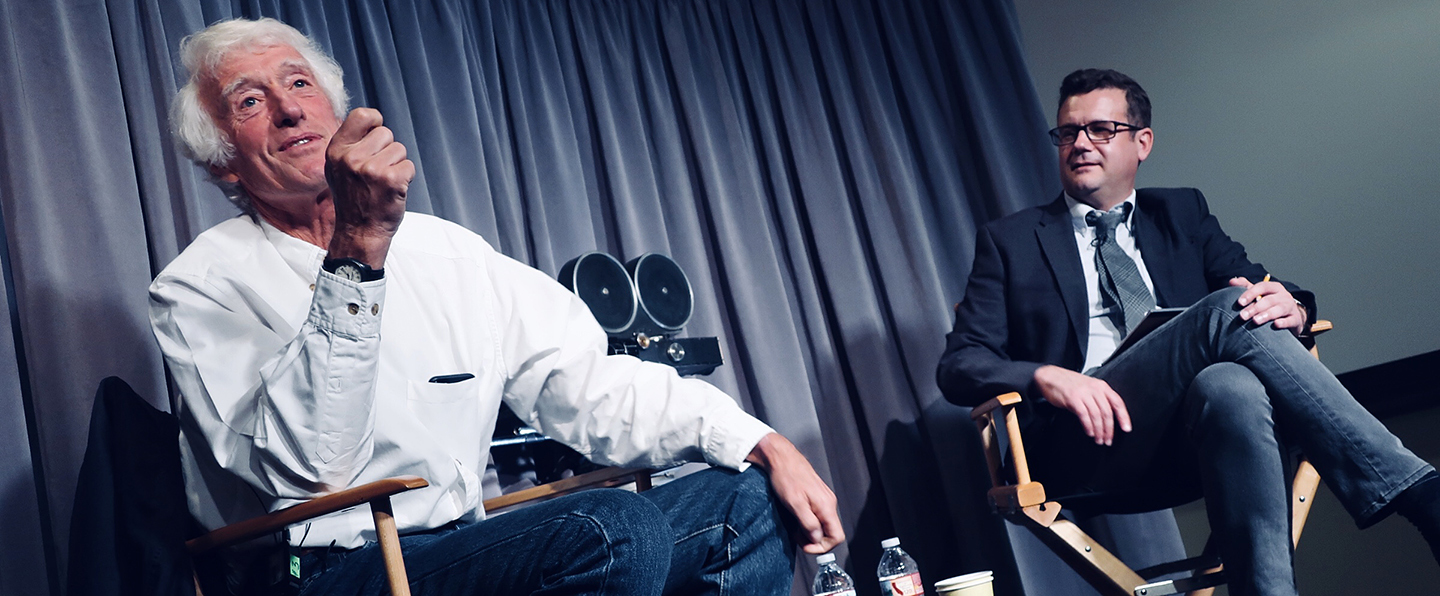
Roger Deakins, ASC, BSC at Clubhouse for Blade Runner 2049 Discussion
The cinematographer arrived on November 8 to discuss his latest work with director Denis Villeneuve.
Roger Deakins, ASC, BSC was the featured guest and speaker at the ASC Clubhouse on Wednesday, November 8, during a Coffee & Conversation event focusing on his work in the stylish sci-fi thriller Blade Runner 2049:
In the film, Officer K (Ryan Gosling), a new “blade runner” for the Los Angeles Police Department, unearths a long-buried secret that has the potential to plunge what’s left of society into chaos. His discovery leads him on a quest to find Rick Deckard (Harrison Ford), a former blade runner who has been missing for 30 years.
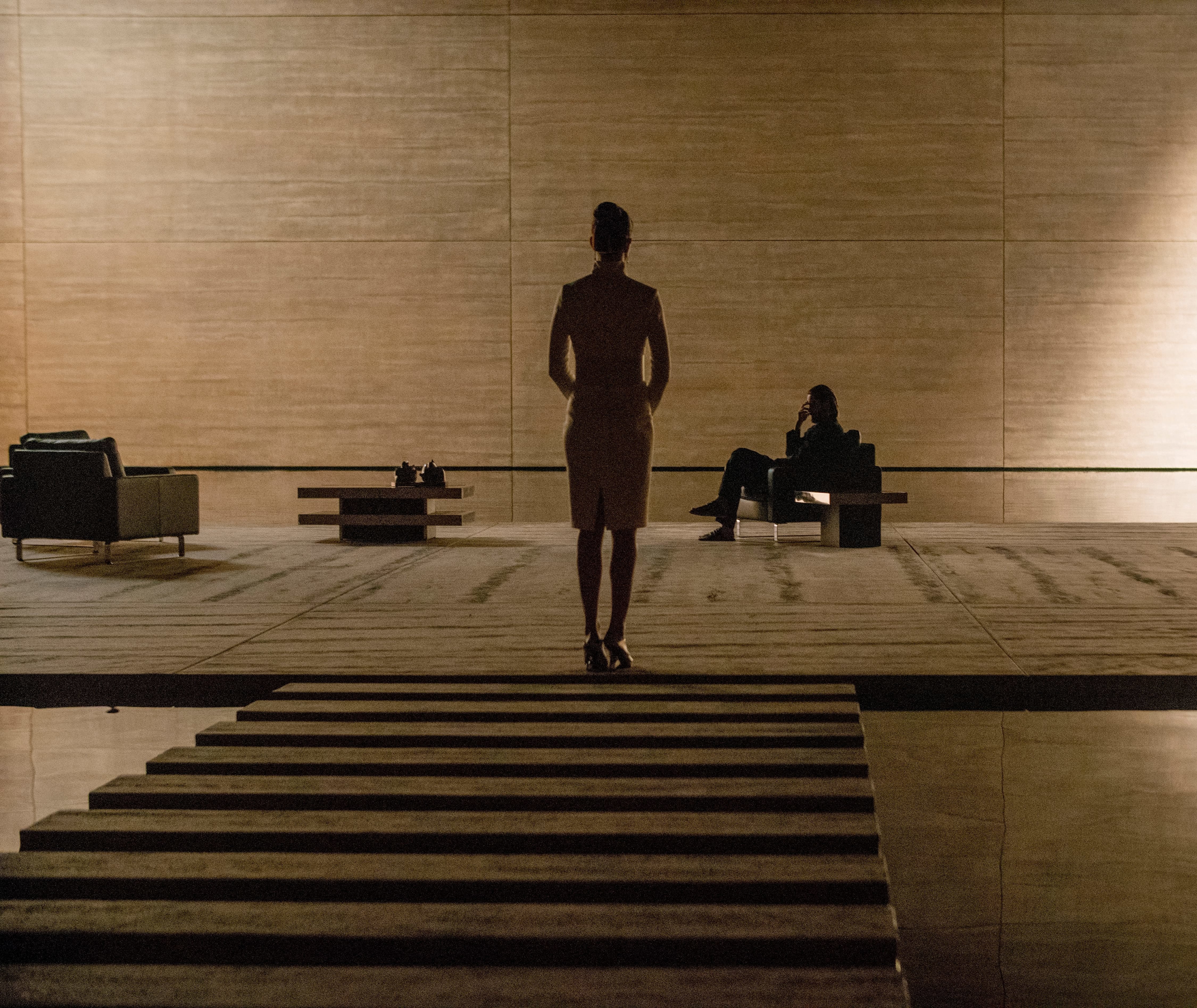
Notes Deakins in American Cinematographer’s upcoming December cover story on the making of the film:
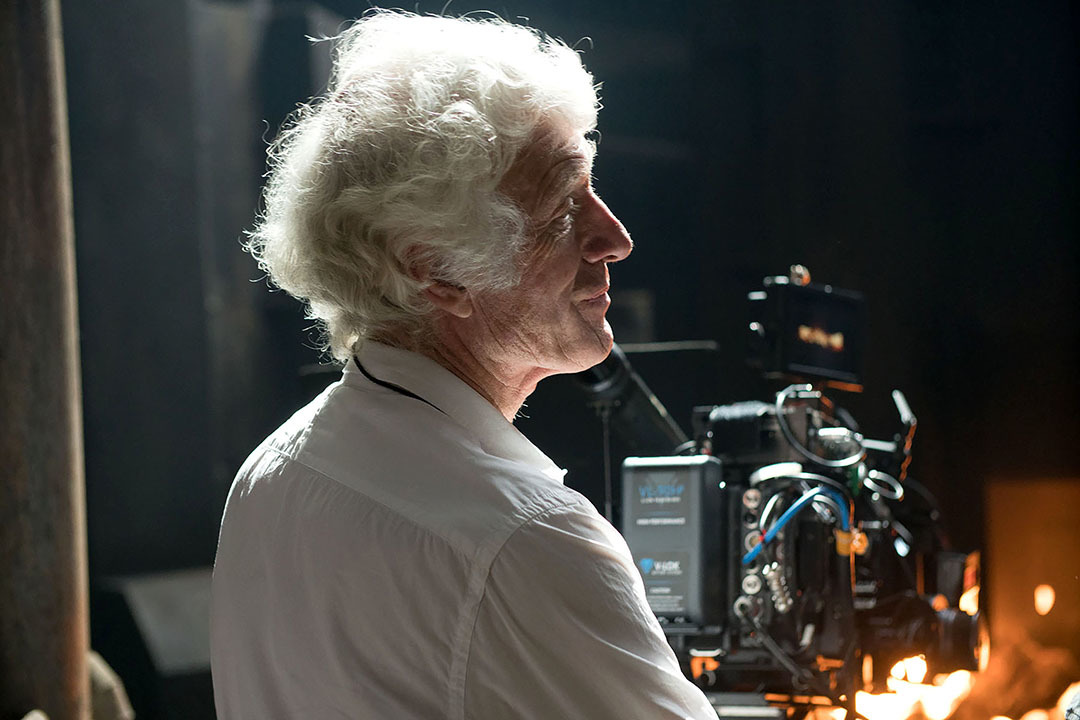
“I thought it would be interesting if the interiors of this huge, monolithic building always had the feeling of moving sunlight. Some of those sets were very severe, just square walls with no windows or obvious light sources, so I looked for different ways to bring patterns of moving light into them. One architectural reference we liked used water as a ceiling piece to create a caustic light effect; we took that idea and embellished it. Two scenes in Wallace’s office — which is basically a platform surrounded by water in this big concrete box — were probably the most complicated bits of lighting.”
The cinematographer previously collaborated with director Denis Villeneuve on the thrillers Prisoners and Sicario.
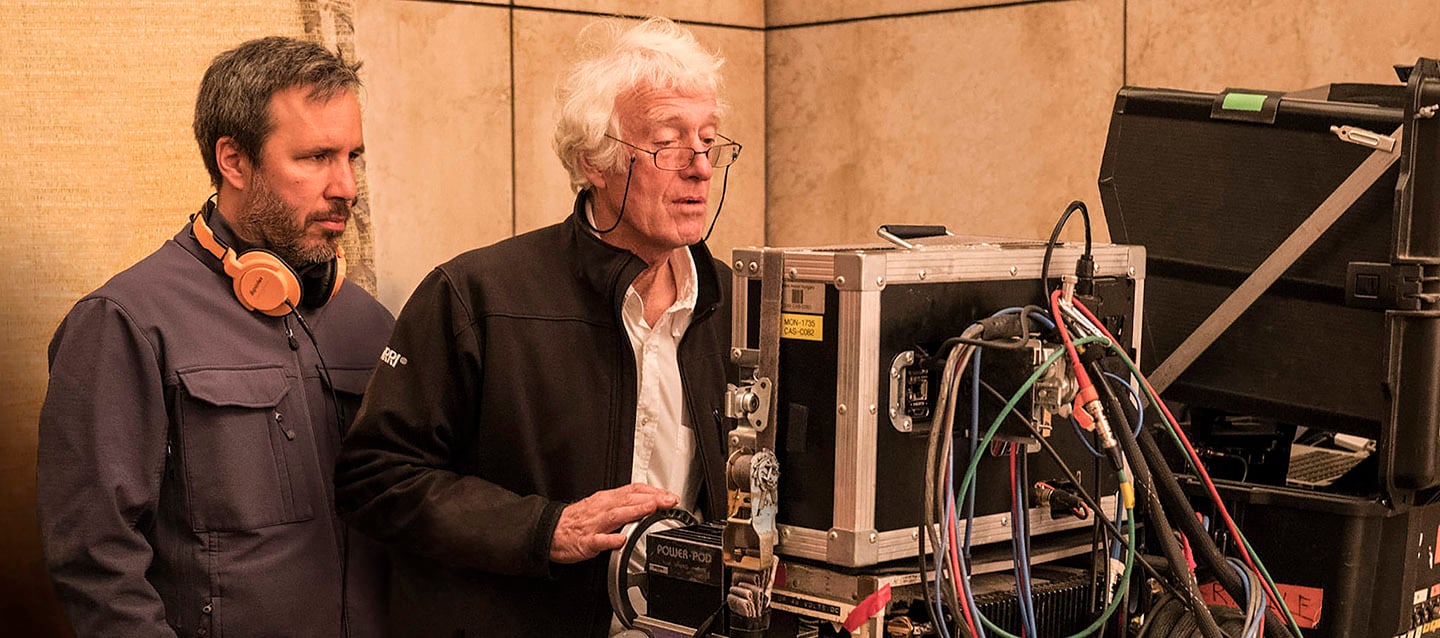
Deakins’ other feature credits include The Assassination of Jesse James by the Coward Robert Ford, Kundun, No Country for Old Men, O Brother Where Art Thou?, Mountains of the Moon, Fargo, Barton Fink and Sid and Nancy.
He is a 13-time Oscar nominee and a 14-time ASC Outstanding Achievement Award nominee (which he won for The Shawshank Redemption, The Man Who Wasn't There and Skyfall).
In 2010, Deakins was honored with the ASC Lifetime Achievement Award.
The Coffee & Conversation event on November 8 was moderated by filmmaker and American Cinematographer contributor Jim Hemphill.
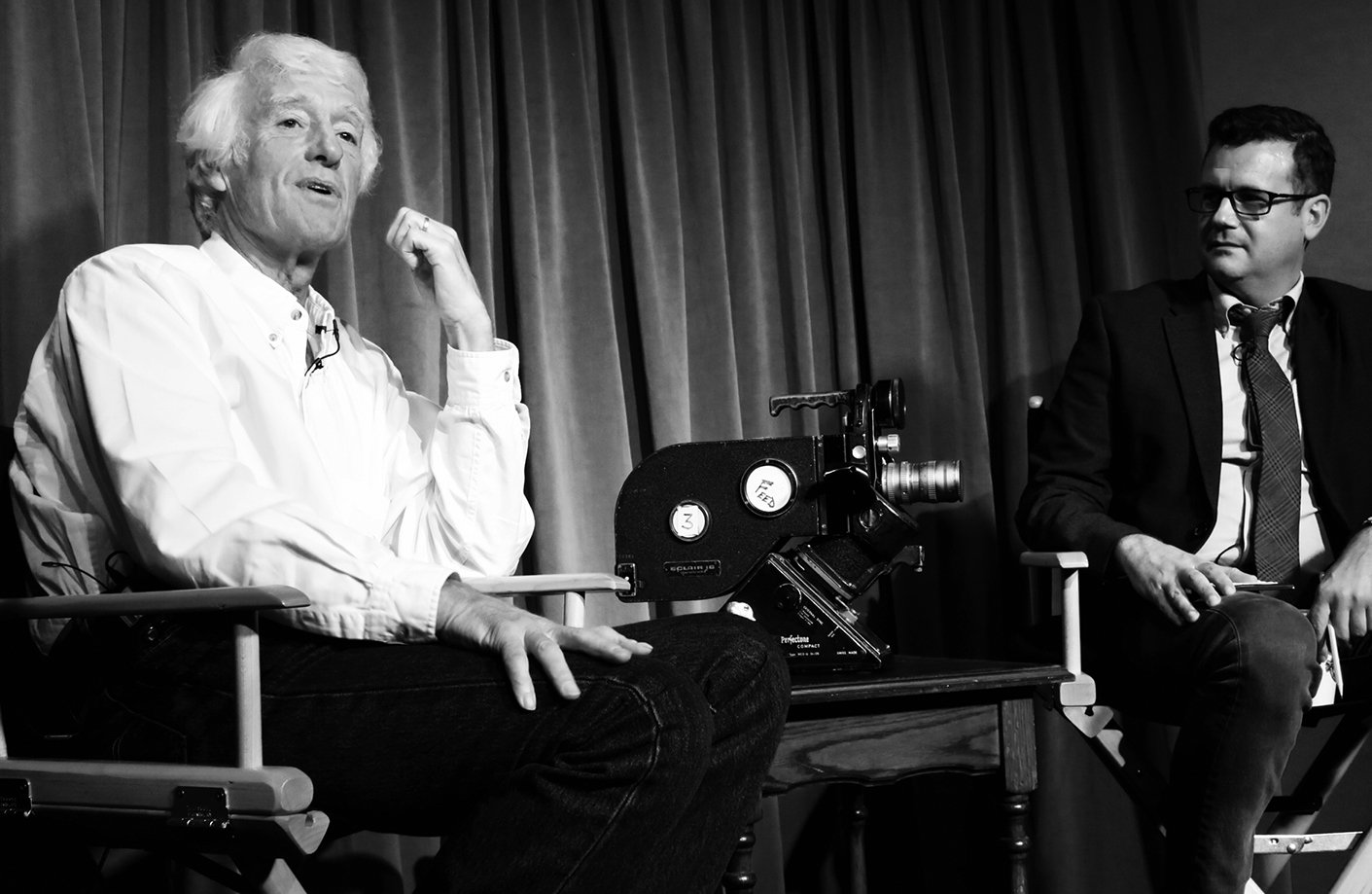
Acknowledging that Blade Runner 2049 was a project of far greater scale and ambition than either of his previous films with Villeneuve, Deakins nevertheless emphasized the need to keep things simple: to focus on character and emotion and let the lighting and framing follow appropriately. He began the afternoon by discussing his desire to let Blade Runner 2049 stand on its own, apart from Ridley Scott and Jordan Cronenweth, ASC’s work on the 1982 classic Blade Runner; for Deakins, the work of director Andrei Tarkovsky, particularly Solaris, was a greater influence on this sequel than the original Blade Runner, though he expressed great admiration for Cronenweth’s photography on that film.
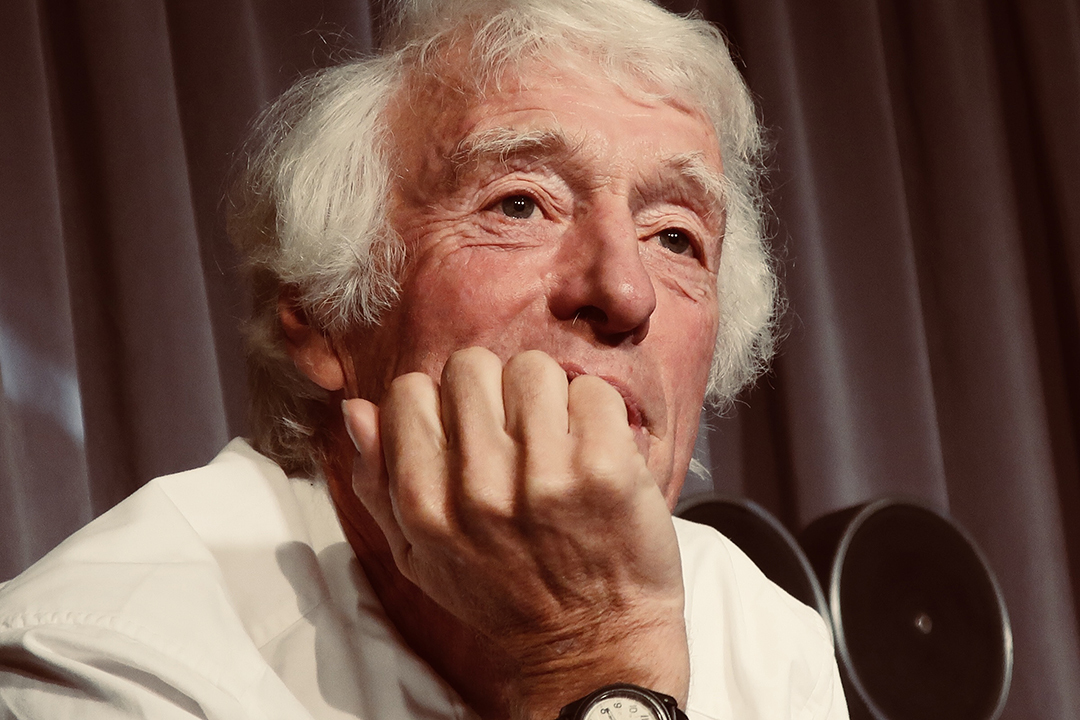
Deakins screened several clips from Blade Runner 2049, each of which he played twice so that during the second presentation he could talk throughout the footage, providing shot-by-shot commentary on his intentions and how he achieved them. He spoke about working with Villeneuve and production designer Dennis Gassner (see interview here) to integrate the lighting and sets; for example, an early scene was designed so that Ryan Gosling’s character would remain in silhouette, something that was accomplished as much through architecture as lighting. Deakins talked about achieving his color effects in camera rather than in post, a philosophy that extended to visual effects and other components of the visual style — wherever possible, he explained, he and Villeneuve sought to shoot everything practically in order to give greater detail and weight to the imagery. Deakins also talked about shooting with the Arri Alexa, on which he has shot all of his digital features, and discussed the bold palettes he applied to individual sequences.
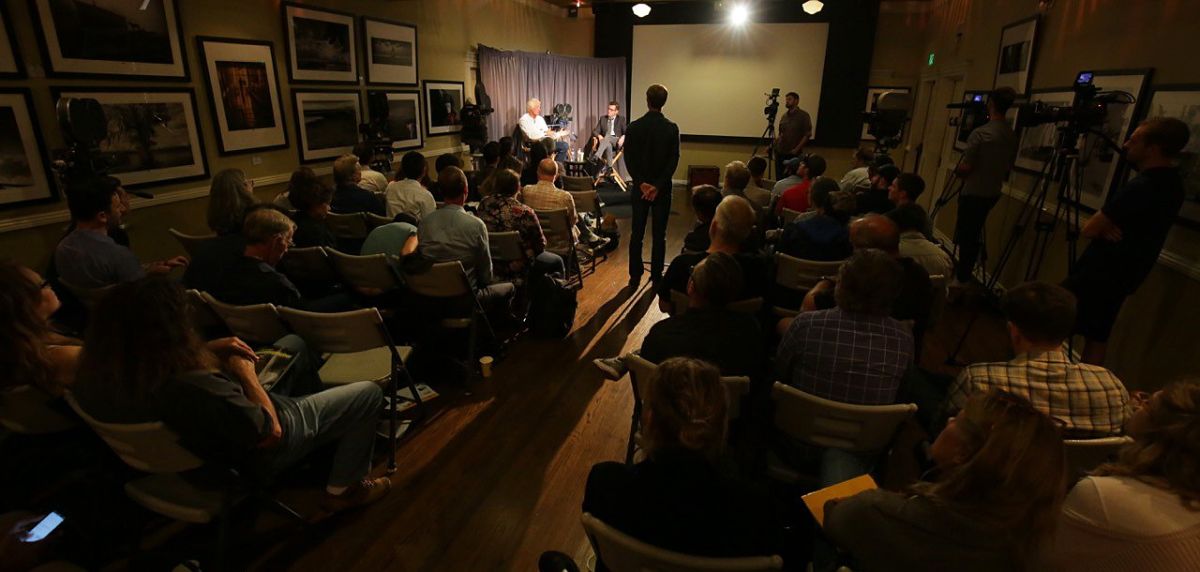
After the clips, Deakins opened the discussion up to audience questions and addressed everything from shooting Blade Runner 2049’s climactic action sequence to delivering the film in a variety of formats (IMAX, 3D, HDR, etc.). He devoted a great deal of discussion to the need to balance preparation and openness, explaining how he and Villeneuve would storyboard each scene but leave room for discovery if the actors came up with something unexpected. He talked about collaborating with actors and visual effects artists, and showed additional clips relating to the audience questions in order to illustrate his desire to create lighting that would mirror the themes and psychology of the film.
Deakins also talked about his background as a documentary cameraman and how it informs his fiction work, which provided a nice transition to a treat for the attendees: Deakins’ demonstration of a 16mm Éclair NPR camera that he donated to the ASC Museum, and which revolutionized the art of documentary filmmaking:

A complete video document of this event and discussion will soon be available on the ASC web site.
